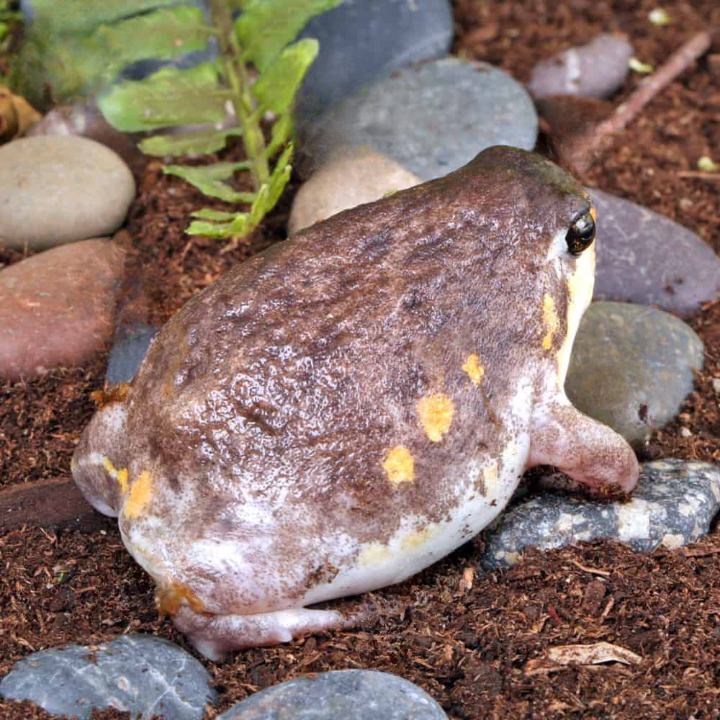Mozambique Rain Frog For Sale
WE HAVE MOZAMBIQUE RAIN FROGS FOR SALE. HERE ARE SOME HIGHLIGHTS:
Mozambique Rain Frog For Sale
- Breviceps mossambicus
- “Flat-Faced Frog”
- Field Collected
- Approximately 1.5 – 2 Inches In Length
- Most Adults Will Max Out In Size Around 2 Inches In Total Length
- These Are Voracious Hunters Feeding On Pinhead Crickets
FUN FACTS!!
- The Mozambique Rain Frog, scientifically known as *Breviceps mossambicus*, is a remarkable amphibian native to the coastal regions of Mozambique, as well as parts of South Africa and Swaziland. It belongs to the family Brevicipitidae, which is characterized by their stout bodies and short limbs. These frogs have a distinctively rounded shape and can often be identified by their smooth skin, which varies in color from light brown to sandy hues, providing effective camouflage within their natural habitat. One of their unique adaptations is their ability to burrow into the ground to escape extreme weather conditions, such as drought, which is a common challenge in their environment.The Mozambique Rain Frog exhibits fascinating behavioral traits, particularly during the breeding season. Unlike many other frogs that rely on water bodies for reproduction, this species utilizes a specialized breeding strategy. Males call to attract females, and they often create a foam nest for their eggs above the ground, using a combination of saliva and plant matter. This adaptation not only protects the eggs from predators but also helps to retain moisture, vital for the survival of the developing tadpoles. The eggs hatch into a direct-development stage, bypassing the aquatic tadpole phase, which further enhances their survival in a habitat that can be sporadic in water availability.Despite their intriguing characteristics, the Mozambique Rain Frog faces threats from habitat destruction primarily due to agriculture and urban development. As the human population grows and expands into these natural habitats, the frog’s breeding grounds and living spaces are increasingly compromised. Conservation efforts are essential to ensure the survival of this species. Monitoring populations, protecting their habitats, and raising awareness about their ecological significance can help safeguard the Mozambique Rain Frog and maintain the delicate balance of its ecosystem. Advocating for sustainable land use practices is crucial in mitigating the impact of human activities on this captivating amphibian and the biodiversity of its surroundings.





Reviews
There are no reviews yet.